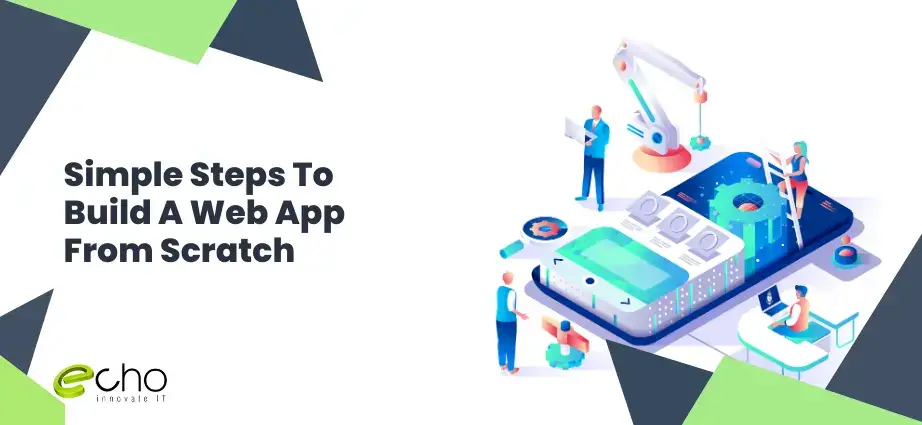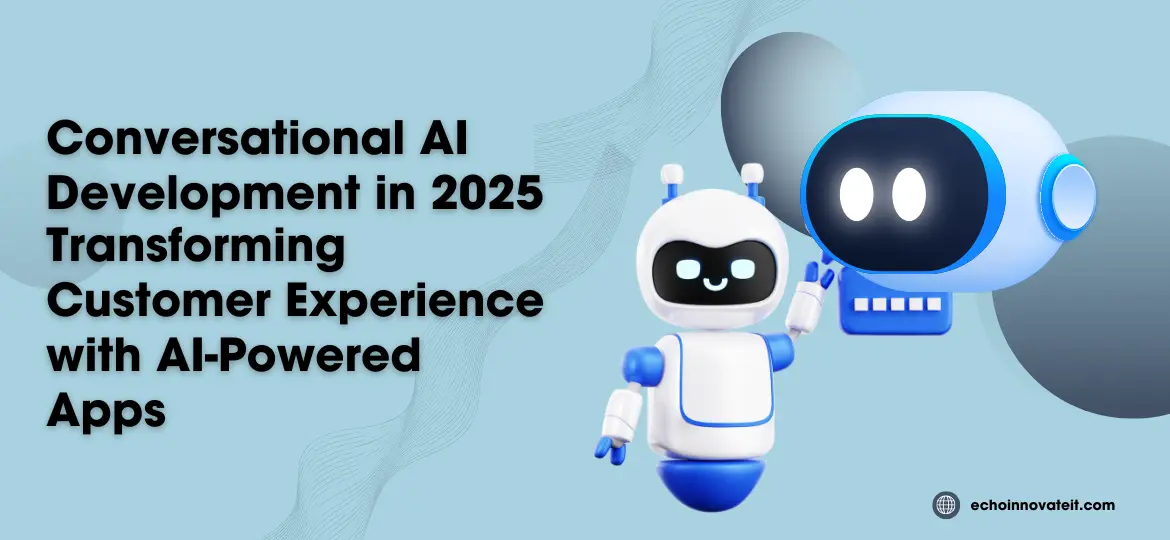You must have heard about popular web applications like Facebook, Netflix, Spotify, and Uber. These are examples of the successful web apps created so far. In simple words, a web app is software that runs in your web browser. Have you ever wondered how you can implement website development for your own business? If yes, you are at the right place.
The future of web application development is a promising deal if you are well-versed in the latest trends and use the right technology stack that is relevant to today’s changing world. Additionally, a custom website development company is likely to become a game-changer in your web development journey. With this, let’s understand the process of designing a web app, starting from developing an idea to its final launch with ease.
What is a Web App?
A web application is a custom web program hosted on a remote server, accessible through your web browser over the internet. Unlike traditional websites, a web app is designed to provide interactive features and functionality. Built using technologies like HTML, CSS, and JavaScript, along with databases for storing and managing data, web application development focuses on creating dynamic solutions that perform operations such as data management (CRUD), task execution, and user collaboration.
It’s essential to distinguish between a website and a web application. While a website primarily delivers information, a web app operates as an interactive software tool. For instance, when users access a web application for mobile, it may mimic the behavior of a native mobile app but remains distinctly web-based. Examples like Gmail, Amazon, YouTube, and online tools such as automated web software and file scanning tools demonstrate the versatility of web apps.
To ensure a seamless user experience, web app development often integrates APIs and leverages web application testing tools, including web page testing software, to optimize performance and functionality. With the rise of hybrid platforms, businesses are increasingly turning to web apps as efficient, scalable alternatives to standalone mobile or desktop software.
Web applications (or web apps) are interactive programs accessible through a web browser, offering numerous advantages such as multi-user access, no need for installation, and seamless cross-platform compatibility. Progressive Web Apps (PWAs) are a modern solution, blending the best of websites and apps by enabling offline access and enhancing user engagement. The website application development process requires thorough planning, including idea validation, defining web app functionality, and setting project timelines. From wireframing to responsive UI/UX design, each step plays a crucial role in creating the best web-based apps.
Web app development also involves backend and frontend development using different languages and frameworks. Deployment is made more efficient with strategies like CI/CD pipelines and blue-green deployment, ensuring smooth post-launch adjustments. Examples of popular web-based applications include Google Docs, Trello, and Slack, showcasing the variety of web app samples that streamline business processes or improve user engagement. A key web app definition is software designed to run online, providing cross-device access through browsers, making them highly scalable and flexible.
Defining web-based applications includes understanding their capacity to deliver personalized, real-time interactions without needing installations. The advantages of web apps include accessibility from any device, ease of updates, and the ability to reach users worldwide. Web applications are crucial tools for businesses aiming to innovate, enhance performance, and increase engagement.
A web application is a software program that works in the web browser. They are different from websites in terms of content and features. A web app is comparatively more dynamic and interactive than a website. Where a website can be limited to providing similar experiences to different users, a web app serves personalized experiences to its users.
With this, web content can usually change in web applications, whereas on websites, the content can only be read or viewed. Therefore, web apps are typically developed using technologies like HTML, Javascript, and CSS to provide better functionality to users.
The Complete Guide to Building a Web App: Steps, Tools, and Best Practices
Web app development has become a cornerstone for businesses aiming to create innovative, user-centric solutions. From building a web application from scratch to managing the development process, this guide explores every critical stage, key tools, and strategies for optimizing your web app for high performance and SEO. Let’s dive into the steps and best practices for creating web apps while seamlessly incorporating trending keywords.
Understanding the Basics: What is a Web App?
A web app is a software application that runs on web browsers and provides interactive services to users. Unlike traditional websites, web apps are designed for real-time user interaction and dynamic content updates. Developers are responsible for ensuring these applications are both visually appealing and functionally robust.
1. Planning and Ideation Stage
Define Your Idea: Clearly identify the problem your web app will solve. This stage sets the foundation for the entire development process.
Research Target Audience: Understand user needs and preferences to design user interfaces that deliver optimal experiences.
Choose the Right Type of Web Development: Decide between front-end, back-end (server-side), or full-stack development depending on your project scope.
2. Design and User Experience
Sketch Your Web App: Outline the core features and workflows.
Create Wireframes and Prototypes: Use tools to design user-friendly layouts that are both functional and visually appealing.
Focus on UI/UX Design: Ensure the app is easy to navigate and aligns with user expectations.
3. Development Process
Front-End Web Development:
Utilize HTML, CSS (Cascading Style Sheets), and JavaScript frameworks to build responsive web pages.
Prioritize cross-browser compatibility to ensure seamless functionality across all major web browsers.
Back-End and Server-Side Development:
Implement server-side logic using programming languages like Node.js, Python, or PHP.
Develop a robust database management system to store and process customer data efficiently.
Real-Time Features:
Integrate real-time functionalities like chat, notifications, or live updates to enhance user engagement.
Cloud Hosting Solutions:
Deploy your web app using reliable cloud hosting platforms to ensure scalability, speed, and availability.
4. Testing and Launch
Conduct Rigorous Testing: Identify and fix bugs during the development stage to ensure a smooth user experience.
Optimize for Search Engines (SEO):
Use trending keywords like “build a web,” “web app development,” and “creating web apps” to increase visibility.
Focus on mobile-first design to cater to the growing number of mobile app users.
Launch Your Web App:
Deploy the app to production and ensure its performance under varying traffic loads.
How to Create a Secure and Robust Web Application
Web application development involves a comprehensive process that includes gathering business requirements, designing the user interface, developing the frontend and backend, deploying the application, and conducting rigorous web application security testing. Ensuring the safety of your web app from potential vulnerabilities is critical in today’s digital environment.
The process often integrates web page testing software and automated testing tools to enhance efficiency and accuracy during the testing phase. Leveraging automated software testing tools—including open-source options—helps identify bugs, performance bottlenecks, and security loopholes. Additionally, web browser automation plays a key role in streamlining repetitive tasks, making the development and testing phases more efficient.
Whether you are building simple static web pages or complex, dynamic applications, web application development relies on robust frameworks and methodologies. For optimal results, using tools like automated web software and adhering to best practices in web application security ensures a reliable, scalable, and user-friendly end product.
Also Check:
Types of Web Applications To Know About
Static Web Apps
As the name suggests, static web apps are simple and are not interactive. The data does not change or get updated according to the user’s will. To make any changes in the static web apps, the programmer has to download, edit, and publish the information again. Due to their simple structure, they are well-suited for blogs, portfolios, or informational pages.
Dynamic Web Apps
In contrast to static web apps, a dynamic web application serves real-time data as per the user’s request. They are an excellent option for providing live information to users, such as news, weather, videos, messages, etc. Facebook, Netflix, Instagram, and Google Docs are some of the examples of dynamic web apps.
E-commerce Web Apps
E-commerce web apps are popular these days. They allow users to make a purchase or sell products through digital mediums or platforms. Such web applications are perfect for online businesses to showcase a wide variety of products and sell them through features like order and customer management, payment gateways and relevant marketing strategies. eBay, Shopify, Amazon, and Etsy are some of the examples of ecommerce applications.
Web Portals
Web portals are web platforms that work as access points to different content and services like emails, forums, search engines, etc. They are best for sharing various information in one single place, focusing on educational, social media, employee-based content, etc. LinkedIn, WebMD, Yahoo, Udemy, etc. are some of the examples.
Progressive Web Apps
Progressive web apps (also known as cross-platform web applications) are a perfect combination of mobile and web applications. With mobile app features like offline functionality, push notifications, and installation features, they serve the purpose of native mobile applications. They can function on a variety of devices like smartphones, tablets, desktops, etc. Some examples of PWAs are Pinterest, Flipkart, and Forbes.
Step-by-Step Process To Develop A Web Application For Your Business
Develop and Research Your Web App Idea
What do you wish to create? What does your web application focus on? Are there any similar competitors in the market? The first step to building a web app involves a detailed research process to validate your idea, market popularity, niche, and implementation of the overall plan. Ask yourself the above questions to get more clarity and insights about this idea.
Brief About Your Web App’s Core Features
Moving forward, the next step is to define the core features of your web app. You must check the user interface while setting the features of your web app. Stay relevant features that solve the client’s problem, which your customers might benefit from. It can also be termed MVP (Minimum Viable Product), which is a product developed with the least effort to get customer feedback quickly. It’s a flexible and agile approach that many businesses opt for when developing a full-fledged web application.
Add User Interface (UI) and User Experience In Your Web App
Once you’ve completed the research phase and outlined the necessary features, the next step in custom web application development is focusing on the UI (User Interface) and UX (User Experience). This stage can be executed effectively by collaborating with a reputed web app development agency. Using methods like wireframing and prototyping allows you to visualize the design and functionality of your web application or website application, providing a clear blueprint of the final product.
To ensure a successful development process, prioritize factors such as intuitive navigation, design consistency, smooth flow, responsive design for multiple devices, robust error handling, and an easy onboarding experience for new users. Understanding the difference between a website vs application is essential here, as the design and development requirements differ significantly.
By adhering to these principles, you’ll create a user-friendly web app that aligns with your business objectives while offering a seamless experience for your audience. If you’re wondering what is a webapp, it’s a dynamic, interactive software accessible through a browser, designed to perform specific tasks efficiently.
Development Phase For Your Web App
Once your web design and development part is done, one of the crucial stages comes into action. The development stage involves choosing the correct technology, programming language, and server-side functions. Developing the front-end and back-end frameworks for your web app will be followed to give a foundation to your web app. Front-end development can be built through HTML, CSS and Javascript. Backen can be done using cloud platforms like Google Cloud, Microsoft Azure, AWS, etc.
Web Testing And Debugging Process
Web testing is one of the most critical stages, which involves necessary steps like error fixing, checking the security of your web application, and ensuring that all the features run smoothly on different devices. Testing can be done through various techniques like functional testing, usability testing, security testing, performance testing, and so on. To learn more about web testing techniques in detail, read our recent blog written on Step-by-Step guide to web testing.
Final Launch And Deployment Stage
Once you have finished the rigorous testing and debugging process, it’s finally time to launch your web application. To initiate this process, you can choose a reliable hosting partner like Google Cloud, AWS, Heroku, etc. Set up your domain name, configure server settings, and set up SSL certificates for a secure flow of information. You can regularly update and optimize your web application to track its speed and efficiency.
Regular Maintenance And Updates
You can gather user data and track the progress of your web app to keep checks on your web application. To keep your web application updated, it is essential to maintain your MVP on a timely basis. With this, one can also add additional features after taking user feedback.
Front-End Web Development
In front-end web development, the focus is on the user-facing elements of a website or web-based application software. Front-end developers are responsible for coding the parts of a site or mobile web app that users interact with, ensuring that both desktop and mobile versions of the site are functional and visually appealing. This area of web development has significant overlap with small business web design, as both emphasize the user interface (UI) and user experience (UX) elements. However, it’s the front-end developers who turn the designs into fully functional websites or mobile web apps.
Front-end developers typically use three core programming languages: HTML to structure content, CSS to define the site’s typography, colors, and layout, and JavaScript to handle dynamic features like forms, animations, and pop-ups. They are also responsible for ensuring the site complies with modern website security standards and web application security requirements to protect against potential vulnerabilities.
Moreover, front-end developers collaborate with back-end developers to ensure the website or web application functions smoothly. While front-end developers handle the visual and interactive aspects, back-end developers manage the server-side logic and databases that power the website or app, making the “front-end vs back-end” distinction crucial to website application development. Developers must ensure security protocols are followed, such as implementing HTTPS and regular code audits, to meet web application security requirements.
To create a seamless experience, it’s essential to follow website security standards while ensuring mobile responsiveness. Techniques such as testing for bugs, optimizing for SEO, and improving site load times all contribute to building the best web-based apps. Furthermore, developers who wish to turn a website into an app can use various tools and frameworks to convert it into a mobile web app, offering users a native app experience.
Conclusion
Creating web apps involves a comprehensive development process that encompasses planning, design, coding, and testing. Developers are responsible for delivering solutions that are not only functional but also align with user expectations and industry trends. By focusing on real-time features, seamless user interfaces, and optimized SEO strategies, you can ensure your web app stands out in a competitive digital landscape.
Developing a web application from scratch may sound challenging to many. But if you break the process step-by-step, it may turn out to be more accessible. Want to know how? Firstly, get clear with the fundamentals of web app development, and choose the type of web app you wish to build (simple, complex, progressive, etc.). Once decided, you can follow the above process in detail, such as setting up a goal, creating a realistic plan, implementing design and development, testing your web app, and final launch.
If this sounds good, you know what to do next! Hire Echoinnovate IT, a well-established website-building agency that has been in the web app development business for ages. Please share your project requirements or reach out to us directly.
FAQs
What are the first steps to start building a web app?
Begin by defining your app’s purpose and target audience. Then, outline the key features and create a wireframe to visualize the layout.
Which technologies should I use for development?
Common choices include HTML, CSS, and JavaScript for the front end, and Node.js, Python, or Ruby on the back end. Choose based on your comfort and project needs.
How can I ensure my web app is secure?
Implement HTTPS, use secure authentication methods, and validate user inputs to protect against vulnerabilities like SQL injection and cross-site scripting.
What tools can help with testing my web app?
Use tools like Jest for JavaScript testing, Selenium for automated testing, and Postman for API testing to ensure your app functions as intended.



